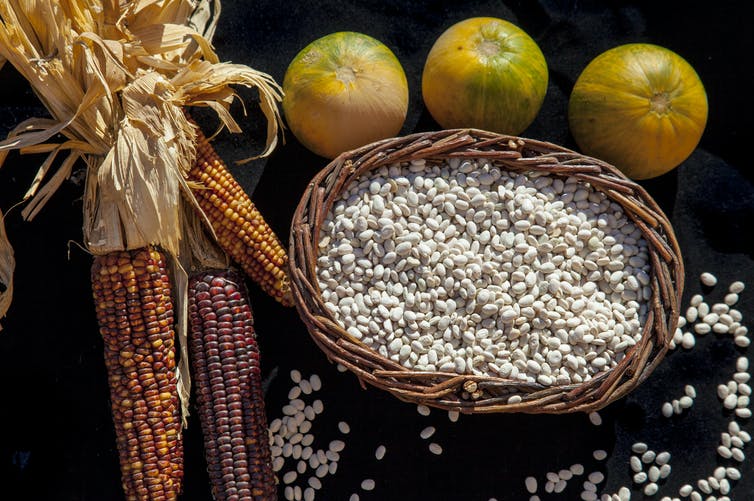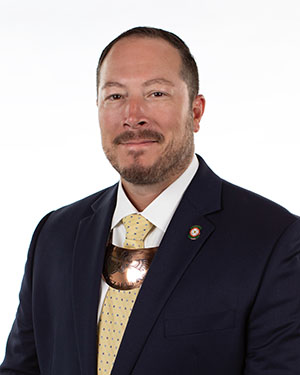
- Details
- By Bryan Warner
Guest Opinion. The modern Cherokee Nation is at the forefront of exploring new ideas and the latest technologies to solve 21st-century problems. At the same time, we do not forget what brought us here. We hold on to the truths that have kept us going through good times and bad.
One of these is keeping food at the center of Cherokee social life. Whether at a family dinner or a community feast, we gather together around the table to nourish both our bodies and our souls.
That has never changed, but the world has made it more difficult. In the five centuries since European contact, the pressures of colonization and removal disrupted our ability to make sure we all had the right foods. From malnutrition to heart disease and diabetes, these food disruptions took a toll on our health.
But, in the past five years the Hoskin-Warner administration, along with the Council of the Cherokee Nation, have made healthy nutrition a top priority. We recognize that food security and food sovereignty are the necessary foundations of a great Cherokee century.

Our focus on community nutrition heightened during the COVID-19 pandemic, when elders and many others were isolated. Our nation staged its largest food distribution effort since our forced removal, delivering food to elders and staging distribution sites across the reservation. That effort, feeding over 112,000 Cherokees, undoubtedly saved lives.
After the pandemic, our work to strengthen food systems continued. Healthy food had become scarce in part because, over many generations, Cherokees and most Americans lost sight of where our food comes from. The concentration of meat processing, for example, threatened our ability to exercise sovereign control over our food.
Our response was the 1839 Meat Company. Today, that operation puts Cherokees to work producing locally sourced protein. We built 1839 Meat Company into a sustainable business, and we also secured millions in federal grants to provide local meat to our food distribution sites, SNAP participants and community organizations. What was common long ago, but had slipped away, is now restored to our local economy.
Hunting and fishing, an integral part of our culture since time immemorial, has also been strengthened by Cherokee investments and strategic thinking. The Cherokee Nation Parks, Wildlands, Fishing and Hunting Preserve Act established tribally owned wilderness areas across the reservation. At the 4,000-acre Sequoyah Hunting and Fishing Reserve near Akins and several other preserves, Cherokees have profound opportunities to help feed our families, enjoy nature, and reconnect with traditional lifeways, including collecting medicinal plants.
The importance of protecting these activities became even more clear when the state of Oklahoma abandoned tribal hunting and fishing compacts. In response, Cherokee Nation reaffirmed our treaty rights to hunt and fish across our reservation without interference by the state. Last year, I signed, on behalf of Chief Hoskin, an agreement among the Five Tribes to open access to our respective tribal lands to all of our citizens.
We look out for our own, and we also champion the food security of our larger community. When Oklahoma declined to participate in a federal summer nutrition program for kids, Cherokee Nation stepped up to run the program, serving every low-income family with school age children across the reservation, tribal and non-tribal.
Now, as Congress debates reauthorizing the country’s Farm Bill, we are at the table. We are advocating for greater control over meat inspection and more flexibility in meeting our low income citizens’ food needs. The days of the federal government treating us like wards in the areas of food sovereignty and food security are over.
The future is bright. A few months ago, we launched a new Agriculture Education program at Sequoyah High School. In partnership with the Bureau of Indian Education and the Native American Agriculture Fund, we are empowering the rising generation of Cherokees to keep our agriculture economy working for all of us in the years ahead. Coming up on April 24 is the first ever Cherokee Nation Agricultural Summit, bringing together speakers, producers and vendors engaged in strengthening tribal food systems and economic sustainability.
We all have a responsibility to pass down knowledge of living – and making a living – off the land. But, for many of us, that knowledge is sadly lost. As I look back at five years of working alongside Chief Hoskin and the Council, I feel proud that we are rediscovering and reapplying those traditional lifeways to modern times. We are just getting started.
Bryan Warner is deputy chief of the Cherokee Nation.
More Stories Like This
The Absence of October's Job Report Shows Why Native American Communities Need Better DataTribal IDs Are Federally Recognized. ICE Agents Are Ignoring Them.
Thanksgiving: Part of "Broken Circle Holiday"
Thanksgiving is a Tradition. It's Also a Lie
Decisions About Us, Without Us: Education Dismantling Ignores Tribal Nations
Help us defend tribal sovereignty.
At Native News Online, our mission is rooted in telling the stories that strengthen sovereignty and uplift Indigenous voices — not just at year’s end, but every single day.
Because of your generosity last year, we were able to keep our reporters on the ground in tribal communities, at national gatherings and in the halls of Congress — covering the issues that matter most to Indian Country: sovereignty, culture, education, health and economic opportunity.
That support sustained us through a tough year in 2025. Now, as we look to the year ahead, we need your help right now to ensure warrior journalism remains strong — reporting that defends tribal sovereignty, amplifies Native truth, and holds power accountable.
 The stakes couldn't be higher. Your support keeps Native voices heard, Native stories told and Native sovereignty defended.
The stakes couldn't be higher. Your support keeps Native voices heard, Native stories told and Native sovereignty defended.
Stand with Warrior Journalism today.
Levi Rickert (Potawatomi), Editor & Publisher

